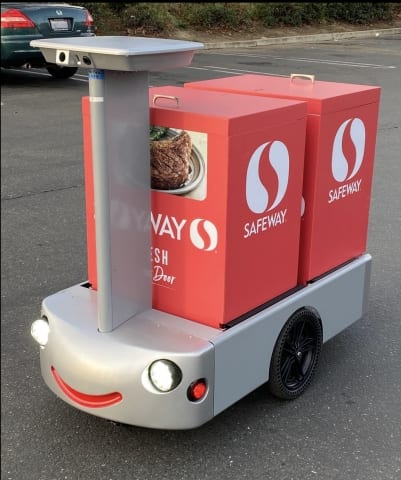Albertsons Teams With Tortoise For Robotic Grocery Delivery

Albertsons, the country’s second-largest grocery store chain, is partnering with automated logistics startup Tortoise to pilot the beta launch of a robotic fleet of Safeway delivery carts in the towns of Tracy and Windsor in Northern California. Albertsons acquired Safeway in a $9.2 billion merger deal in 2015.

Image courtesy of Business Wire press release
“Our team is obsessed with trying new and disruptive technologies that can bring more convenience for our customers,” Chris Rupp, EVP and chief customer and digital officer, Albertsons, said in a blog post. “We are willing to quickly test, learn and implement winning innovations that ensure we are offering the easiest and most convenient shopping experience in the entire industry.”
The remote-controlled, zero-emission delivery cart will bring food and household staples to homes within a three-mile radius of a Safeway supermarket. The robotic carts, which are fully equipped with a camera and speaker, can hold up to 120 pounds of groceries in four lockable containers. The carts move at an average speed of 3 mph and are powered entirely by an electric battery. During the pilot run in Northern California, a human will accompany the cart on deliveries. Customers will receive a text message when the cart arrives.
In Chicago, Albertsons launched a pilot program for pickup lockers and an automated pickup kiosk at some Jewel-Osco locations.
Although already popular, shopping online for groceries has escalated during the COVID-19 pandemic and is anticipated to comprise 21.5 percent of total U.S. grocery sales by 2025, Fast Company reported, citing data from Mercatus and Incisiv.
Founded in 2019 and headquartered in Mountain View, California, Tortoise offers automated logistics technology for delivery bots, scooters and more.
Grocery store spending has increased from $63 billion in February 2020 to $73 billion in October 2020. In a recent interview with Karen Webster, John Ross, president and CEO of the Independent Grocers Alliance (IGA), said supermarkets have to work on their loyalty programs in order to maintain a majority of shoppers’ food budgets.